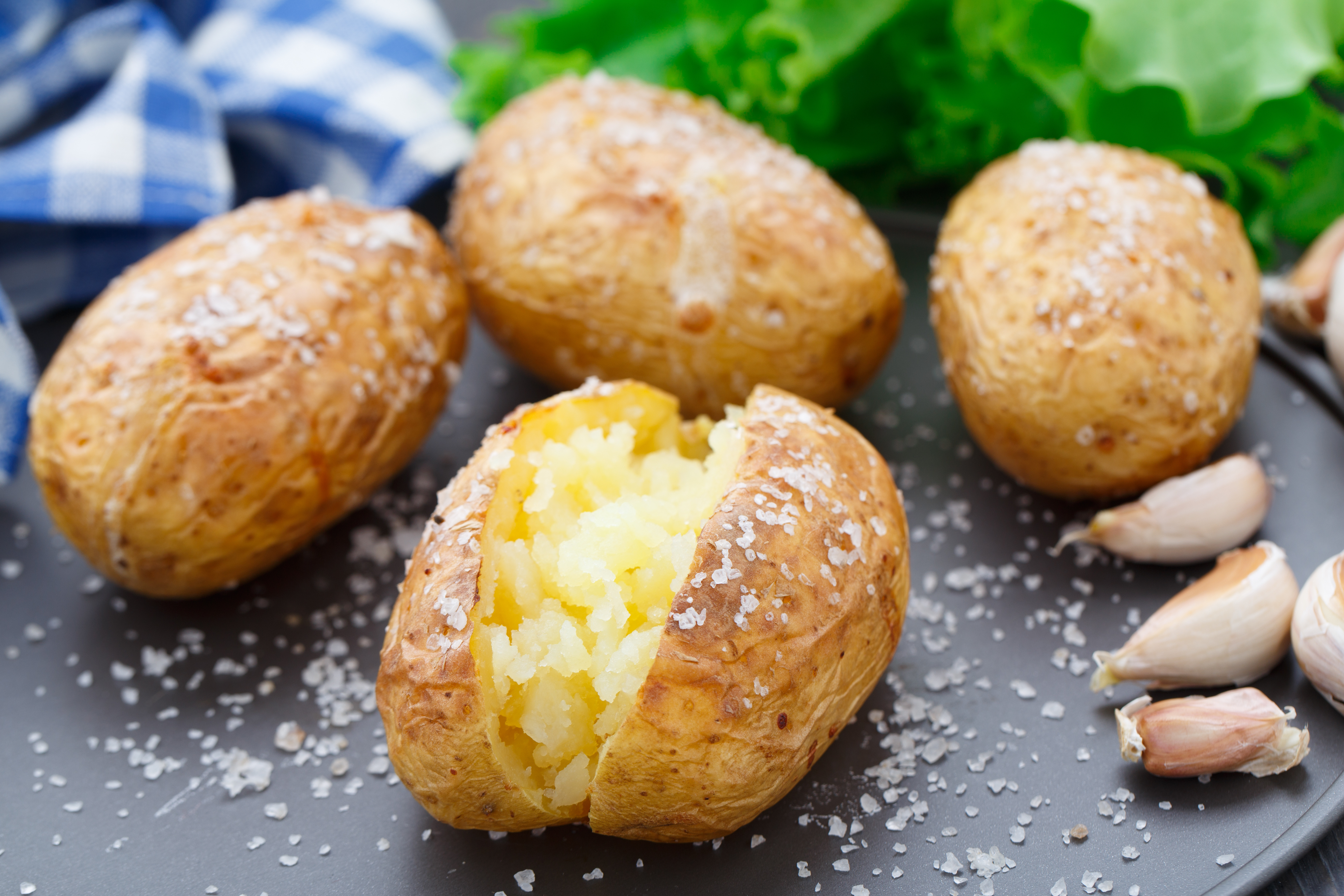
Jacket potatoes are so close to being the perfect midweek winter meal. They’re filling; they’re tasty; they go with basically anything. They’re also cheap, and spuds take much longer to go off than lots of other veggies.
But there’s one problem; it feels like you can basically while away an entire evening waiting for them to cook in an oven.
Advertisement
I can hear the purists now – and yes, I do agree that a lot of the time, the extra wait time is worth it. It’s a great way to ensure perfect, fluffy spuds with delicate, crispy skins, and other cooking methods (like air frying) take a similar amount of time.
But hear me out ― thanks to TikTok, I’ve been converted to a 10-minute microwave jacket potato-cooking method (yes, really).
What’s the method?
TikToker @harley.salem shared a microwave-based recipe for fluffy, crispy jacket spuds – and it’s racked up almost two hundred thousand likes.
Advertisement
The method is pretty simple: you wash the potato, shallowly stab it with a fork a LOT, deeply stab it with a fork a few times, and then wrap the spud in wet kitchen roll.
Place the damp parcel in the microwave for six minutes, and then carefully remove the VERY HOT cooked spud from your microwave. We recommend doing this with a tool like tongs, as it’s literally steaming at this point.
Then, also using a tool like tongs, peel the kitchen roll away from the potato ― et voila, you’ve got a perfectly fluffy spud.
Advertisement
If your spud isn’t fully cooked by the time it’s come out of the microwave, that’s simple to fix – simply re-wrap it in more damp kitchen roll and let it microwave for a couple more minutes (the bigger the spud, the longer you’ll need).
Why does it work?
Wrapping potatoes in wet kitchen roll is “crucial” for a moist and fluffy interior, according to Tasting Table.
Potatoes are pretty watery, however microwaving them can cause all of this water to evaporate really quickly, drying out your beloved baked spud.
Advertisement
The thinking is that wrapping the potato in wet kitchen roll acts as an “evaporation buffer” helping the spud to retain enough moisture to stay fluffy and delicious.
“Best hack ever … sooo easy,” one commenter shared on TikTok. And having tried it myself, I completely agree – the texture is so far from the soggy, grainy mess microwaves sometimes create.
I will say that it’s not the crispiest skin I’ve ever eaten on a potato and the damp kitchen roll gets very, very hot, so you need to be careful (we weren’t joking about those tongs).
Advertisement
But for speed, efficiency and overall flavour, this gets a solid 9/10 from me.





















